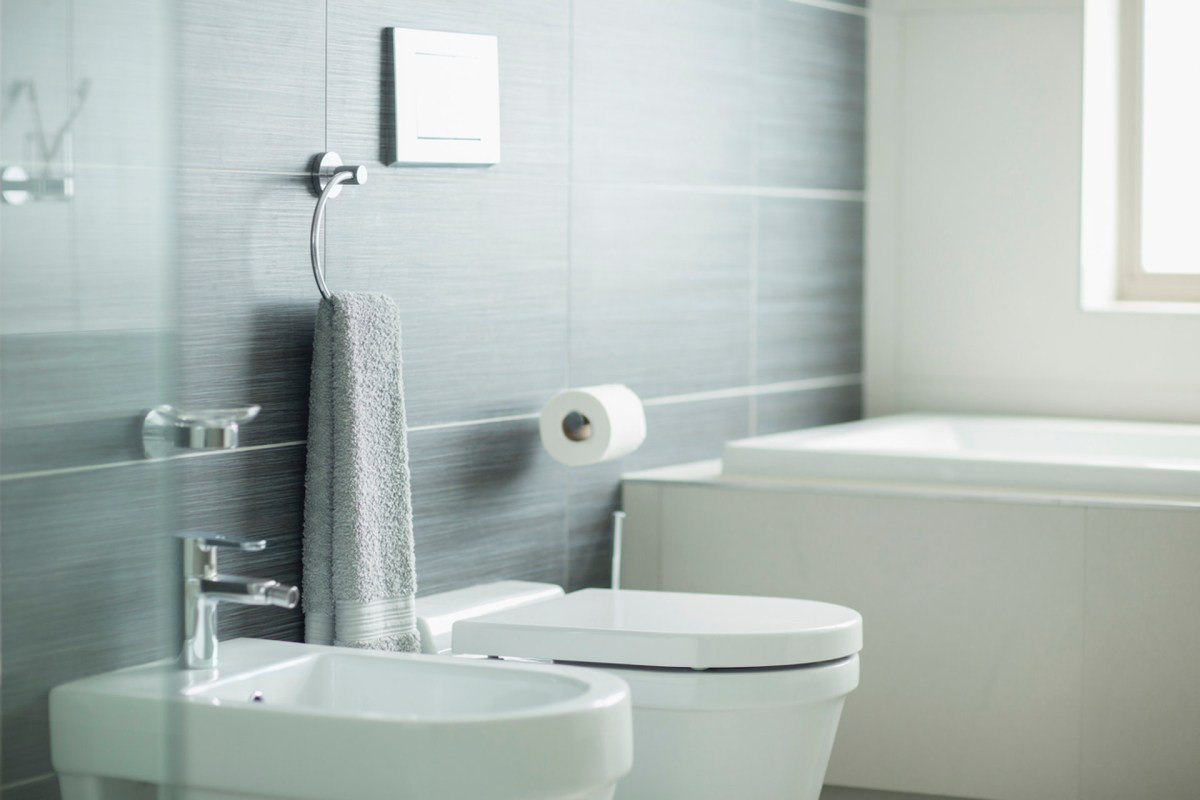It may seem counterintuitive, but you can save tons of water with a simple bathroom upgrade slowly gaining popularity in Western countries: the bidet.
While it uses water to help you freshen up after taking care of business, you won't use nearly as much water as toilet paper — a surprisingly water-intensive product — by using a bidet.
What is a bidet?
A bidet may seem strange to people in the U.S., but they're pretty common throughout Western Europe and Asian countries. Simply put, bidets are bathroom fixtures that use a stream of water to provide a hygienic cleanse after you use the toilet.
You can opt for a traditional standalone bidet that's typically installed beside the toilet and resembles an extra sink, or more modern options such as bidet toilet seats, add-on attachments, handheld sprayers, and travel bidets.
Some high-tech bidets have a dial or button you press to activate the water jets, while other models have a faucet you turn like a sink.
Why should you buy one?
Bidets offer plenty of money-saving benefits so you can stop flushing your hard-earned cash down the commode. By installing a bidet, you can reduce your toilet paper consumption by a staggering 75%, which amounts to about $135 per year in savings, assuming you spend an average of $180.
And you can save water since you won't have to buy as much water-guzzling toilet paper. According to Bidet.org, producing just one roll of toilet paper takes between 12 and 37 gallons of water. In comparison, a bidet uses about the same amount of water it takes to wash your hands — about an eighth of a gallon — per flush.
Plus, many people use more TP than they need, which can clog city sewer systems and create a big stinkin' mess.
Using a bidet can also help save the forests since it takes over 31 million trees to meet the yearly demand for TP in the U.S. If you switch to sustainable toilet paper made of low-impact bamboo, for instance, you can conserve even more water and trees.
According to Bio Bidet, you may not even need toilet paper if you buy a bidet with an air-drying feature.
"Basically, the huge industry of producing toilet paper could be eliminated through the use of bidets," Justin Thomas, editor at MetaEfficient and proud tester of various bidet models, told Scientific American.
How popular are bidets?
Bidets have been used in Western Europe and Asia for hundreds of years, and some South American countries like Venezuela have also adopted them.
In Japan, some public bathrooms even have bidets. They started gaining traction in the U.S. after the COVID-19 toilet paper shortage left people scrambling for other options.
How much do they cost?
Fortunately, you don't have to drop much cash to get a high-quality bidet, although some high-end models cost thousands. However, the simple handheld or portable bidets can cost anywhere from $10-50, and you can snag a basic model of a toilet seat attachment for around $50.
Join our free newsletter for easy tips to save more, waste less, and help yourself while helping the planet.









